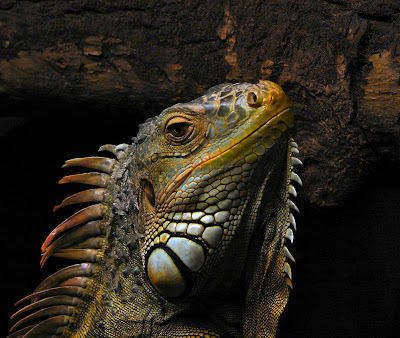Iguanas grow up to 1.5-2 meters in length and can live 15-20 years. This animal is a large lizard, which feeds on plant food, and live trees. In the wild, iguanas live in Central and South America.
They have a calm character, quite livable – that’s why they have become popular exotic pets. To keep the iguana at home takes a lot of money and effort, so before you start an iguana, you should carefully consider all.
The first thing you need for keeping iguanas at home is a terrarium. It should be quite a decent size, because the animal must be free to move around on it. Cage should be equipped with a special lamp, which will provide the necessary duration of daylight, a heater to maintain the optimum temperature, a humidifier and a UV lamp.
The cage needs a branch, upward, to the lamp that the iguana can crawl, choosing the best place for itself. The temperature in the terrarium should range from 25 to 35 ° C.
The cage should also have a bowl of water, occupying at least 25% of the floor. From this bowl, the iguana can drink and it also allows you to maintain a minimum level of humidity. At the bottom of the cage you should put a plastic mat - a layer of paper napkins or towels (but not newspapers), and on top of napkins you should evenly spread out a plate of oak bark.
You should clean your pet regularly in warm water. Bathing is useful for iguanas, because while swimming iguanas are actively moving, molting is easier and faster, iguana skin receives the necessary moisture. You can bathe an iguana in a normal bath, put some pre-subject, on which an iguana at will be able to get out of the water. Water temperature for swimming – 30-35 ° C.
In nature, iguanas feed on plant food. There are also cases where the iguanas eat insects, small rodents, carrion. But at home it is better not to carry out experiments and feed your iguana only vegetable foods. It is also advisable to include vitamin and mineral supplements.
Experts recommend for iguanas a varied menu, which consists of 80-90% of greens and vegetables such as cabbage, beans, carrots, sweet potatoes, dandelion leaves, parsnip, alfalfa, lettuce, etc. These animals can be trained to take food from your hands


No comments:
Post a Comment